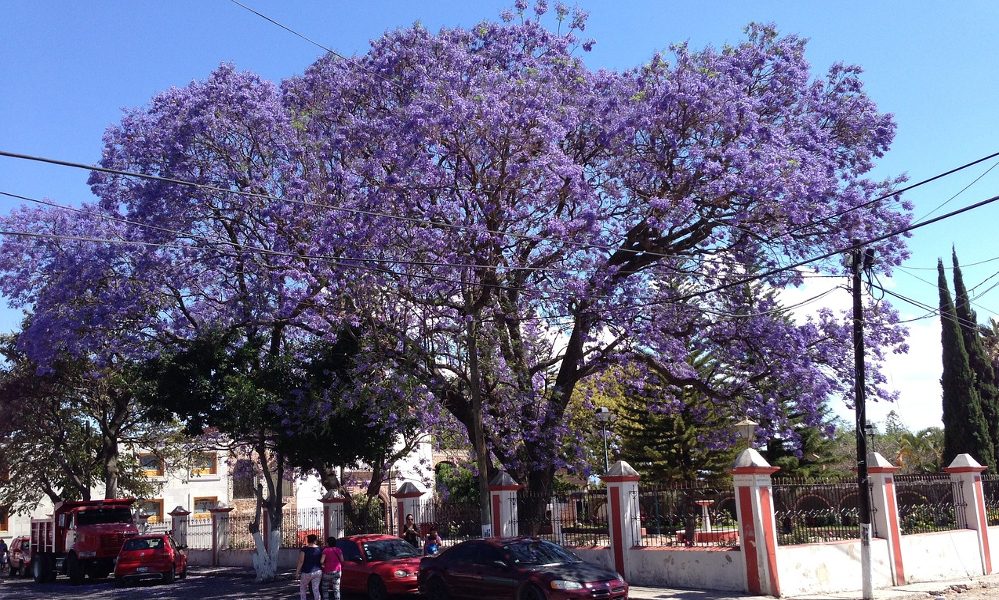From gorgeous flowering trees and refreshing shade trees to delicious fruit trees, there are many amazing trees you can add to your yard or garden. Some of the most common ones include dogwood, apple, and oak trees, but what if you’re looking for something a little less ordinary? You might be interested in learning about the beautiful jacaranda tree. This guide will explain everything you need to know to grow these incredible trees, from what they are to how to care for them.
What are jacaranda trees?
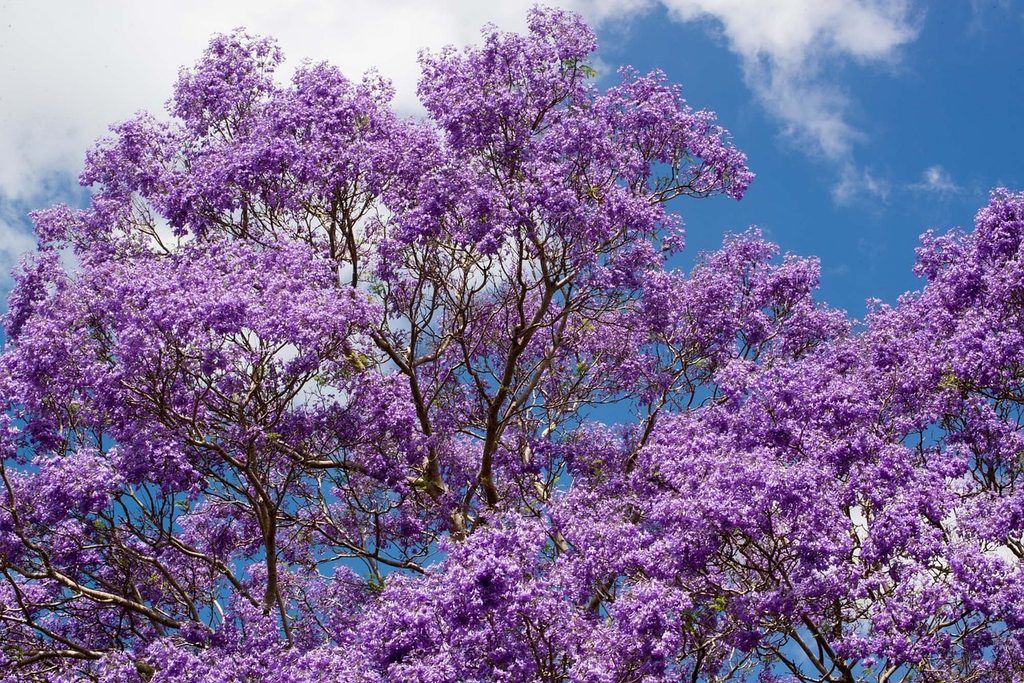
Jacaranda trees are flowering trees that are native to South America. They thrive in hot weather and often grow in California, Florida, and the surrounding states, despite not being native. In late spring and summer, jacaranda trees fill with gorgeous flowers. The flowers are a beautiful shade of purple, and the trees produce quite a lot of them. This makes them a popular addition to gardens and yards of all kinds, and people often plant them alongside sidewalks and in parks. However, this can cause problems when those flowers begin to drop off the trees, forming a purple carpet across walkways and grass! For that reason, we recommend not planting your jacaranda tree near any sidewalks or paths.
The flowers themselves have a subtle, sweet scent that many people enjoy, although some people do not. Once the leaves and flowers begin to drop at the end of the year, they start to smell less pleasant, so you may want to plan on raking and disposing of the flowers and leaves as they fall.
Planting jacaranda trees
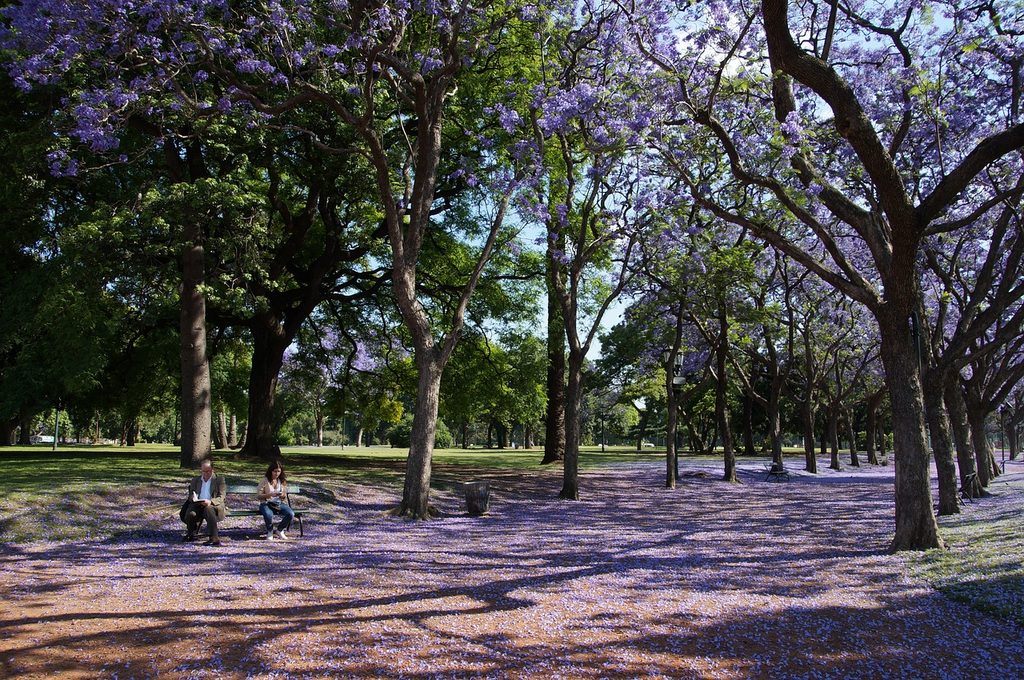
In addition to the mess they can sometimes cause, you should avoid planting your jacaranda tree close to sidewalks and structures due to potential damage. Not only can they grow fairly tall, but they also tend to have far-reaching shallow roots. Be sure to choose a planting site that’s at least 15 feet away from structures or pathways.
Additionally, the planting site should have well-draining soil. Jacaranda trees do not enjoy wet soil, and they can develop serious problems if left in standing water for too long. They should also be planted in full sun. Keep in mind that these trees are native to South America, particularly the mountains and valleys of Argentina and Bolivia, where it’s hot and dry. Mimicking their natural environment will make caring for them much easier in the long run.
Jacaranda tree care
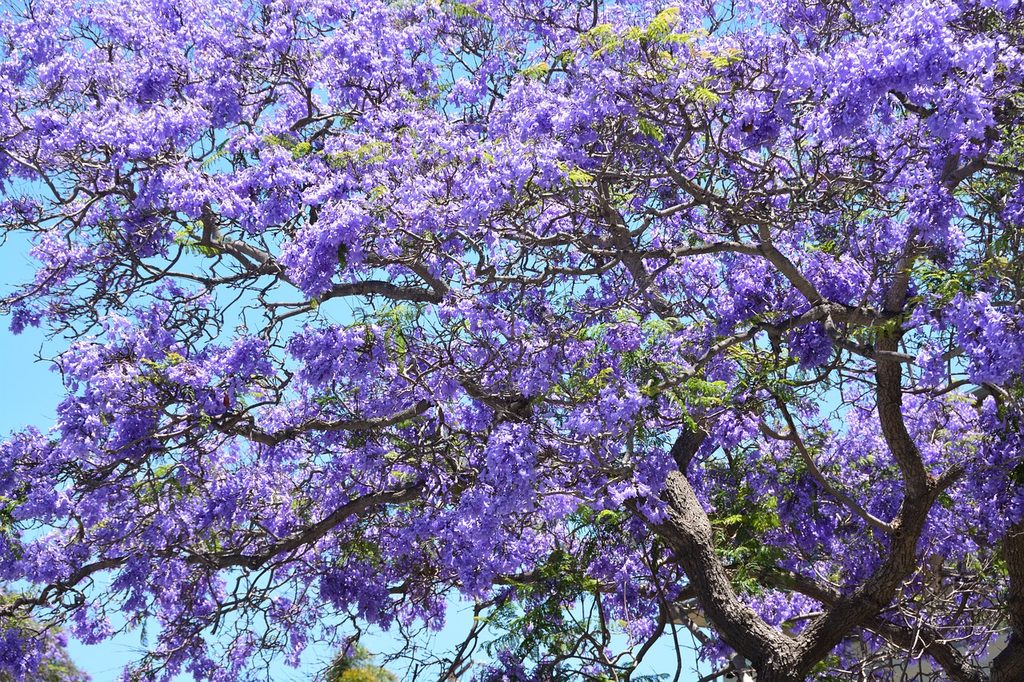
While it’s getting used to your yard or garden, water your jacaranda regularly. These waterings should be deep and thorough, but you should allow the soil to dry out between them. Typically, this means watering your tree once per week, or twice per week in hot weather. Once it is established, your jacaranda tree will be moderately drought tolerant and will only need watering occasionally.
Feeding your jacaranda tree during the growing season is a great way to ensure its health, but take care not to overfertilize it. As with many flowering plants, too much nitrogen can lead to too many leaves and fewer flowers. A light, balanced fertilizer with an NPK ratio of 10-10-10 is ideal. Look for fertilizers specifically designed for trees, especially flowering trees.
Pruning your jacaranda tree stimulates healthy growth and keeps your tree free of damage and disease. Timing is important when it comes to pruning, as jacaranda trees grow quickly. Pruning too early in the year can stimulate too much growth, undoing most of the work you just put in! Additionally, pruning before or during its bloom results in fewer flowers, even if only temporarily. The best time to prune jacaranda trees is after they’ve finished blooming.
Common pests
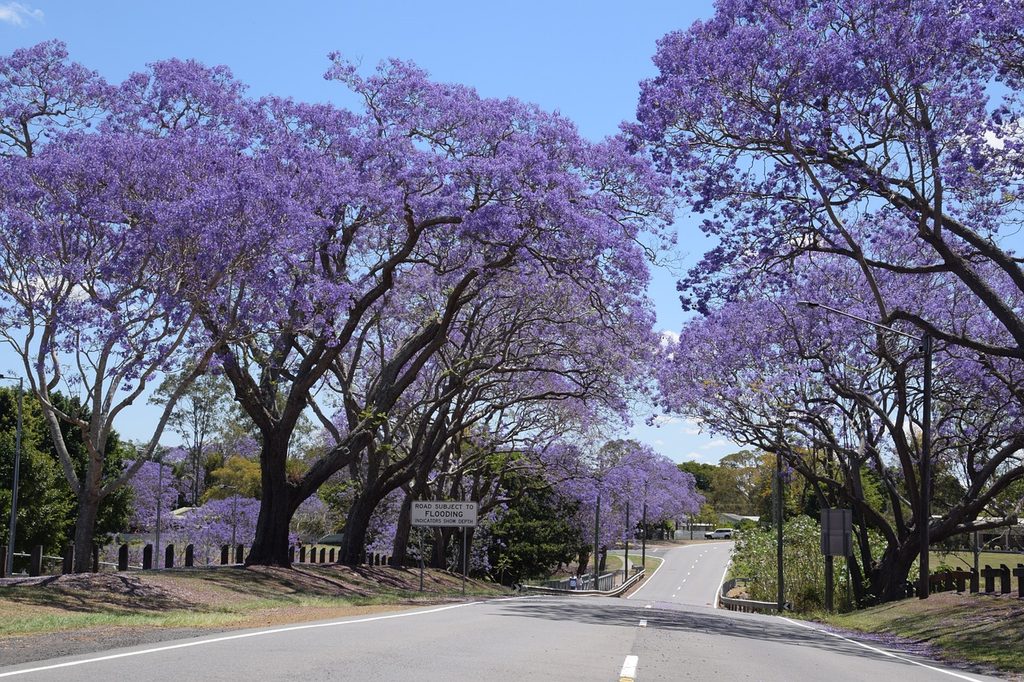
A few common pests such as aphids, whiteflies, spider mites, and scale can target your jacaranda tree. While infestations from these pests are rarely severe and are easy to control with a simple insecticidal soap or pest repellent, they do leave your tree vulnerable to certain fungal or bacterial infections. Watch your tree for signs of misshapen growth and discolored leaves, which can be signs of disease.
A larger issue you may run into is the glassy-winged sharpshooter. Despite its cool name, this pest is actually a type of leafhopper that is native to the southern U.S. These pests carry a bacteria called Xylella fastidiosa. This bacteria causes Pierce’s disease in grapevines, but when introduced to trees it causes oleander leaf scorch. The leaves of the plant begin to turn yellow, then brown, at the tips and edges. This spreads into the middle of the leaf, killing it. Unfortunately, there is no treatment or cure for oleander leaf scorch, and trees typically die within a few years. Increasing fertilization and watering can help prolong the tree’s life slightly, and pruning can help maintain an attractive appearance, but prevention is key. Insecticides or neem oil can repel glassy-winged sharpshooters.
Jacaranda trees are gorgeous, and as long as you plant them correctly, they’re fairly easy to care for. Now that you know all the basics, you’re ready to start looking for jacaranda seeds or saplings. Be sure to give it plenty of room to grow, or else it’ll make room! In just a few years, you’ll have a tall, lovely tree bursting with purple flowers.
